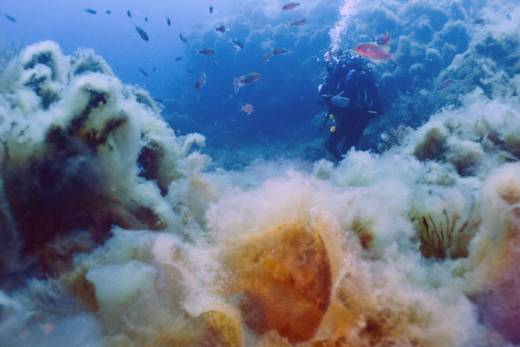Despite decades of research, the trigger that causes algal blooms to begin poisoning their environment has long confounded scientists.
Now, researchers from Scripps and UC San Diego have found the genetic underpinning of domoic acid, a harmful neurotoxin. In a new study published in Science, researchers describe three genes responsible for producing domoic acid in the phytoplankton Pseudo-nitzschia.
Monitoring how the cluster of genes behave could one day yield information on which environmental or biological triggers are responsible for activating them, according to Bradley Moore, a professor of marine chemical biology and geneticist at Scripps and UC San Diego. That information could help fisheries and public health officials predict when harmful algal blooms will occur, allowing them to effectively prepare.
Moore says that the “very small” cluster of genes responsible for the production of the toxin is a relatively rare phenomena compared to other similar organisms, indicating that they may serve some important biological function.
“It’s not there to make us sick. There are different theories for why it’s there, including serving as a feeding deterrent,” says Moore.

